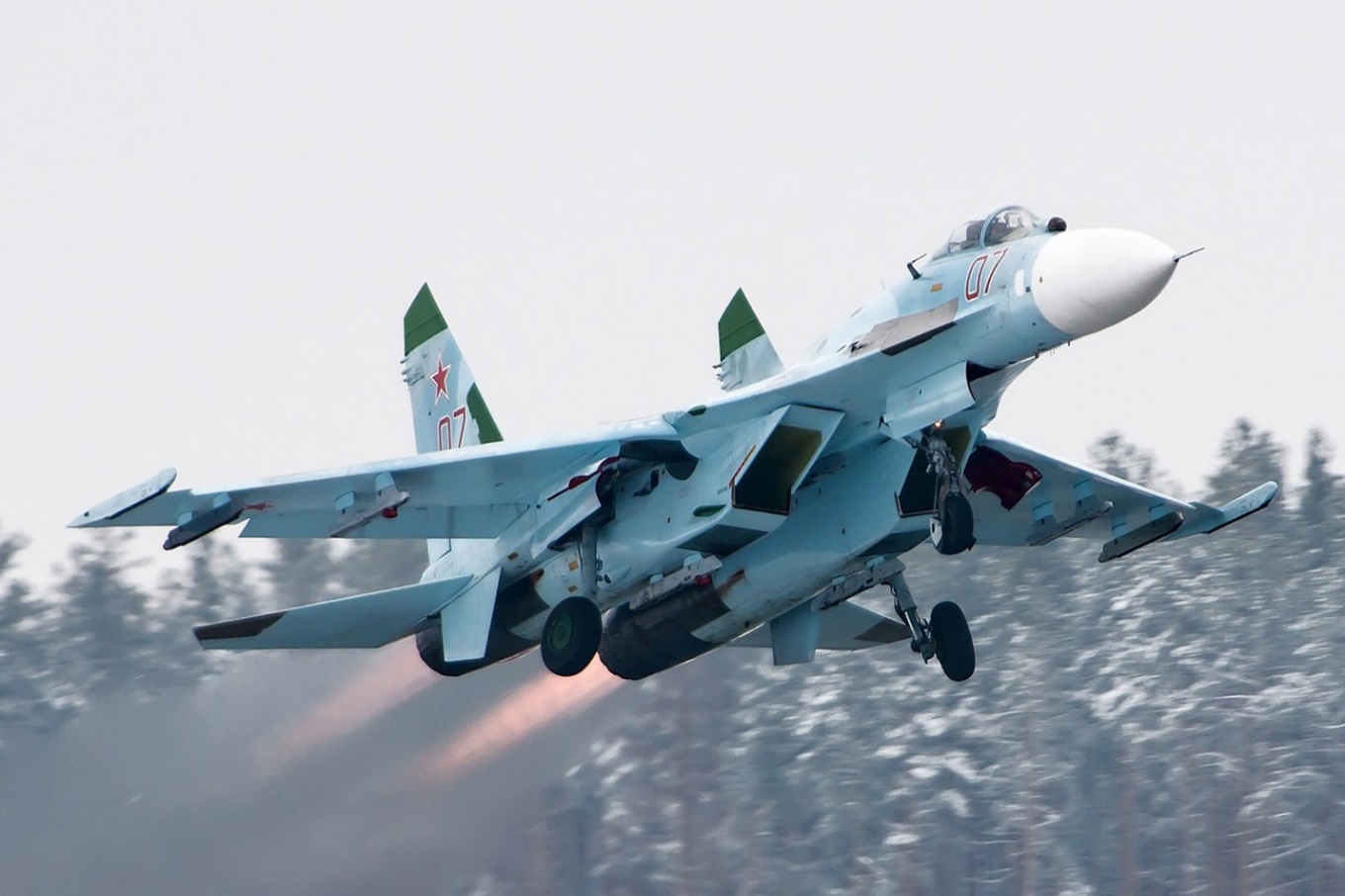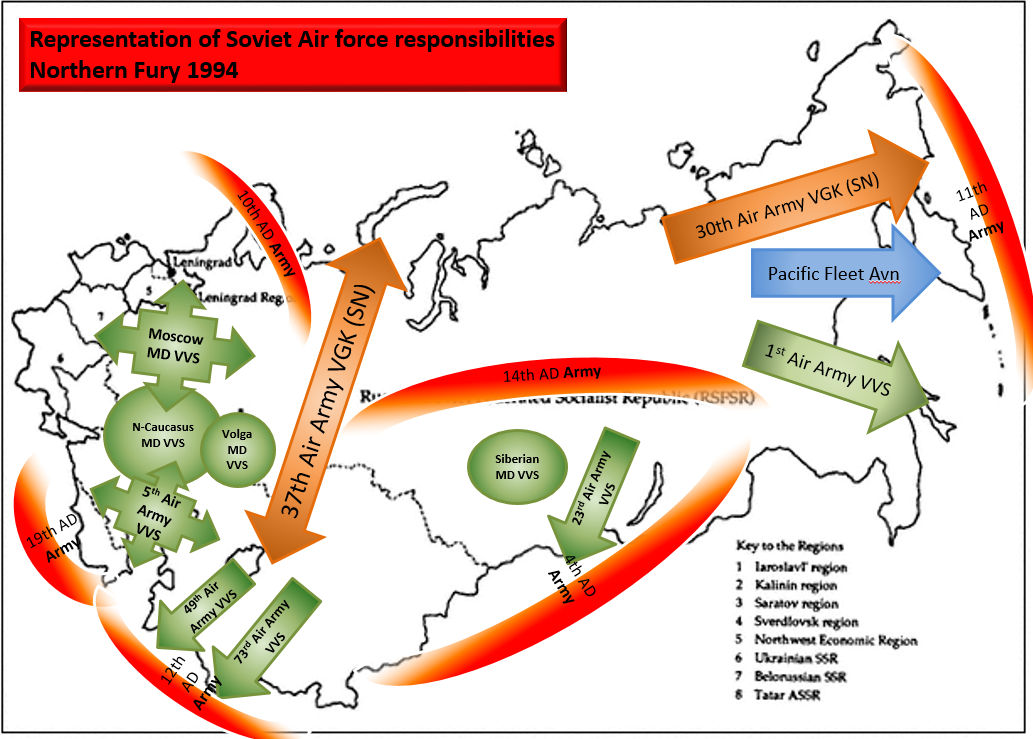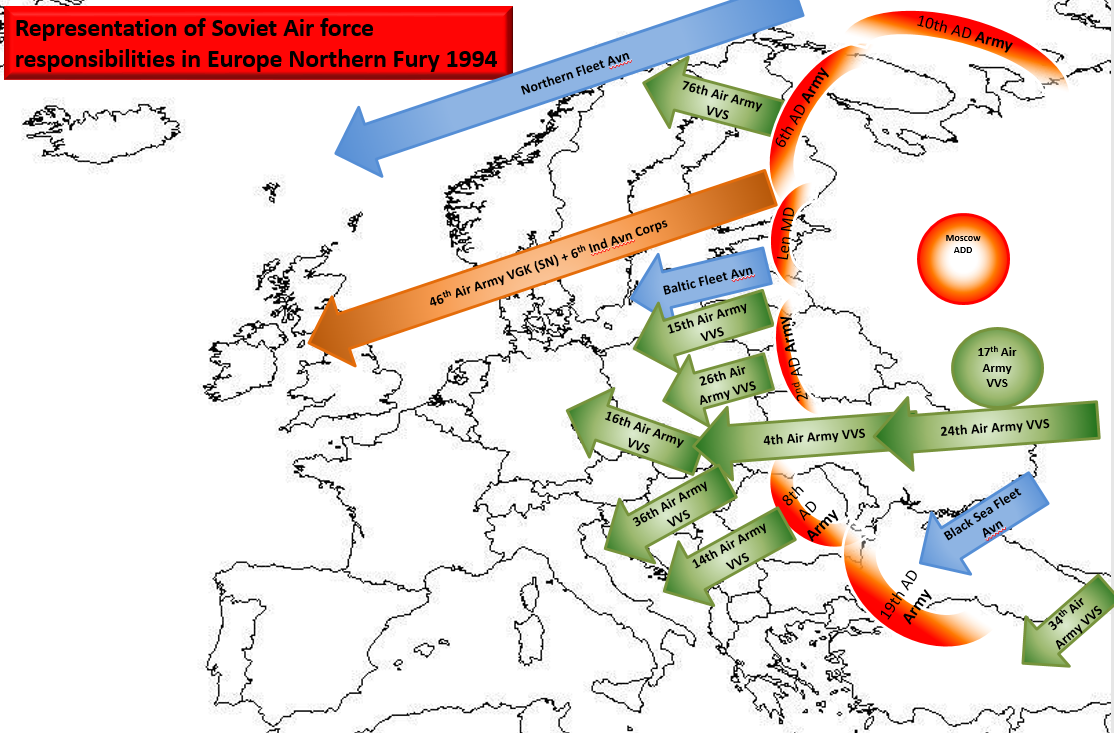Soviet Union Air Force

The USSR is a vast geographic country and naturally gravitated to air transport in its early days. The history of Soviet aviation is little known in the west but the USSR was producing five times more military aircraft than the US in 1939, and year on year out produced every other country but the US during the war.
The Soviet Union actually has four Air Forces:
Frontal Aviation: VVS – Voenno-Vozdushmiy Sily. Primarily responsible for air-superiority, strike and ground support, but not including air defence of the USSR. Includes:
Long range aviation (Bombers), VA VGK (SN) - Verkhovnoye komandovaniye (strategicheskaya tsel').
Transport aviation, VTA – Komandovaniye voyenno-transportnoy aviatsii.
Naval Aviation: VMF – Voenno-Morskoi Flota. Provides ship and shore based aviation to support the Navy including long range reconnaissance and strike, fixed and rotary wing aircraft embarked on ships and support to amphibious and littoral operations.
Air Defence Force: PVO – Protivo-Vozdushnoi Oborony. Singularly responsible for the Air Defence of the USSR including radar surveillance, interception of enemy bombers and missiles and Surface to Air Missile (SAM) defence.
Strategic Rocket Forces: RVS – Raketnye Voiyska Strategicheskogo Naznacheniya. Control of all Surface to Surface Missiles (SSM), primarily nuclear Intercontinental Ballistic Missiles (ICBM), and Intermediate Range and Medium Range Ballistic Missiles (IRBM & MRBM).
Additionally, other services have air elements:
Aeroflot – the national flagged airline of the USSR is essentially a para-military organization that provides significant transport resources in wartime.
The KGB – operates an air arm in support of its border guard tasks.
The Army – primarily uses VVS forces but does control some aviation for airborne and special operations forces.
DOSAAF – a civilian aviation organization with a role to assist the Army, Navy and Air Forces with light aircraft and gliders.
These air forces combined have over 10,000 fighter and fighter bomber type aircraft, over 1,000 long range bombers, more than 8,000 transport aircraft and almost 15,000 helicopters. Over 30,000 active aircraft! Many of these aircraft are old or very specialized, but there are more than 2,000 front line combat fighters (Mig-31, Mig-29, Su-27) – a formidable force. More detail will be outlined in the pages that follow but some examples of the aircraft types can be found at this link.
In Northern Fury several aircraft that were historically retired are retained, and some others continue production past their historic termination date, such s the Mig-29 and Su-27. Development continues so that some aircraft models that did not appear until the late ‘90s or even 2003 will be available in 1994 – in small numbers.
A stylistic depiction of Soviet Aviation formations in Northern fury follows on these two grapics:

